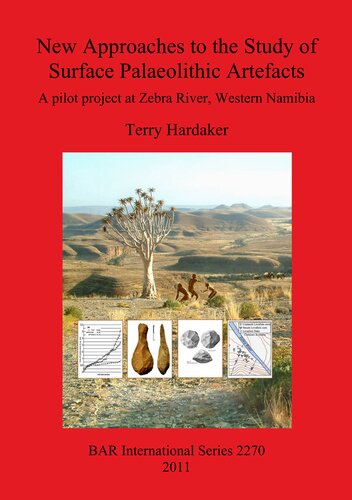

Most ebook files are in PDF format, so you can easily read them using various software such as Foxit Reader or directly on the Google Chrome browser.
Some ebook files are released by publishers in other formats such as .awz, .mobi, .epub, .fb2, etc. You may need to install specific software to read these formats on mobile/PC, such as Calibre.
Please read the tutorial at this link: https://ebookbell.com/faq
We offer FREE conversion to the popular formats you request; however, this may take some time. Therefore, right after payment, please email us, and we will try to provide the service as quickly as possible.
For some exceptional file formats or broken links (if any), please refrain from opening any disputes. Instead, email us first, and we will try to assist within a maximum of 6 hours.
EbookBell Team

4.4
42 reviewsThis study of Palaeolithic Africa, an interim report, describes a large number of sites in the region of the Zebra River, Western Namibia. After the Introductory Sections, a complete list of all sites is given in Section 4, presenting the raw information gathered in the fieldwork. The interpretation of these data is then discussed on a site-by-site basis in Section 5. Here, specific topics which relate to more than one site are considered when they first arise, while other more general topics are discussed subsequently under separate headings. Cross-references are liberally provided in the text. Finally Section 6 draws the threads together and offers a wider comment on the way forward for surface studies for earlier Palaeolithic archaeology. Artefacts deemed worthy of further study, which were usually photographed, measured and given GPS locations, were given sequential numbers and are fully listed in Appendix 1. A summary table of artefacts for each major site collected or recorded during fieldwork is given in Section 4, including a table of the 'numbered' artefacts, by type, to which other recorded artefacts are sometimes added, as noted in the individual tables. In the Foreward, Derek Roe concludes his contribution by adding that this new study... 'contains a mass of useful new information and some good guidance for others to use...I very much hope that students of the Palaeolithic will indeed read this work.'